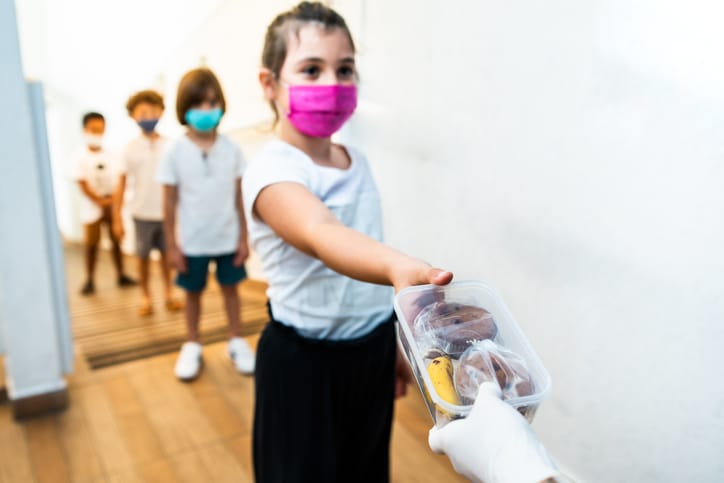After lunchtime is over, school cafeterias often find themselves with a surplus of food that simply gets dumped in the trash. It’s a huge waste, especially when you consider how many hungry kids there are out there who would happily gobble it up. Thankfully, one Indiana school district has decided to make sure students in need are fed outside of school hours, turning their leftovers into take-home frozen meals while pretty much eliminating waste altogether.
- Elkhart School District already offers their students breakfast and lunch. While that’s a fantastic help, the truth is that many students are still living below the poverty line and likely won’t get a hot meal at home for dinner or on weekends. Woodland Elementary School in Elkhart recognized the problem and decided to team up with a local nonprofit to ensure they do.
- Students in need get the meals they need. A group of about 20 students is being sent home with backpacks containing eight different frozen meals comprised of cafeteria leftovers that can easily be reheated and eaten hot. The food is packaged in recycled containers and the food itself is also “reused” in a way, thanks to South Bend-based group Cultivate. “Mostly, we rescue food that’s been made but never served by catering companies, large food service businesses, like the school system,” founder Jim Conklin told WSBT.
- School officials were thrilled when the program was announced. Recognizing the need many students had for more fresh meals outside of school hours, employees at Woodland were overjoyed to hear when the program kicked off. “It’s something they deal with every day,” Natalie Bickel, supervisor of student services at Elkhart Community Schools, told the Washington Post. “They see the need, they see the hungry kids, and to throw [extra food] away was really difficult for them.”
- Nearly 13% of students in the district live below the poverty line. According to 2017 census data, many students in the area live with food insecurity, and this program has allowed them and their families to feel a bit more confident in where their next meal is coming from. “It’s been a struggle as a mom,” one parent named Angel Null said. “There’s times where it’s been just peanut butter and jelly.”
Hopefully more school districts hear about this program and decide to start a similar one – it’s a fantastic idea.
MADE WITH LOVE: To make sure no kid goes hungry, this Indiana school district turns unused cafeteria food into take-home meals for students in need ❤️️ pic.twitter.com/LyhH0OS6FF
— CBS News (@CBSNews) April 3, 2019
A local school district is taking steps to make sure kids have enough to eat. 20 students at Woodland Elementary will receive a backpack with eight individual frozen meals every Friday, made from unused food that may otherwise go to waste. @edernstes1 https://t.co/SbFqXNfpal
— WSBT (@WSBT) April 2, 2019



